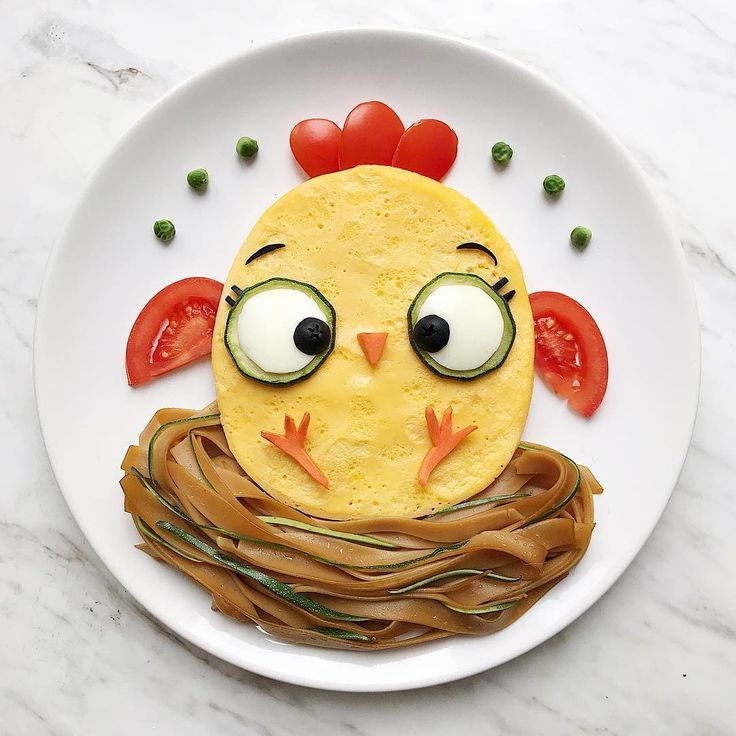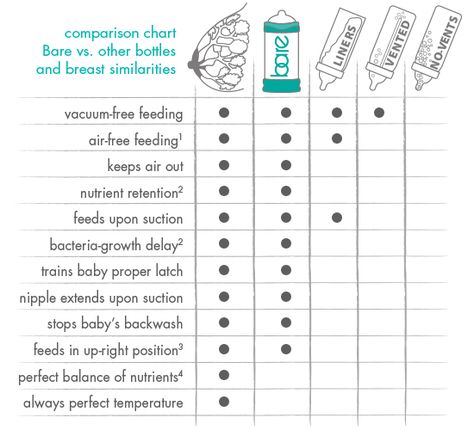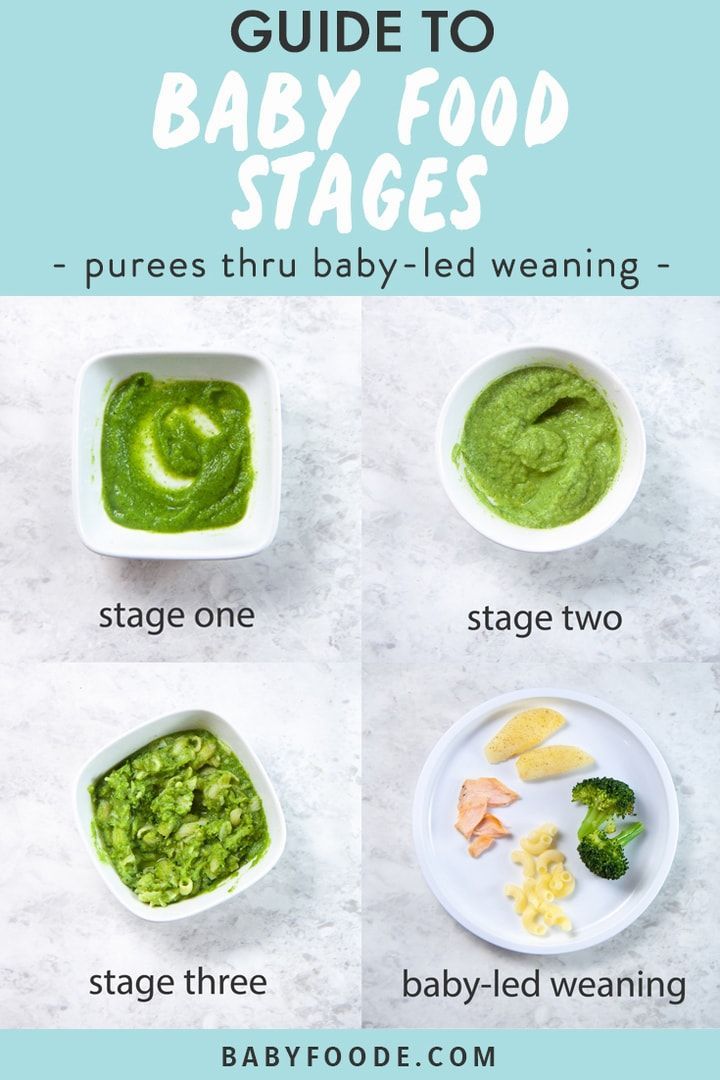Baby food that contains iron
50 Iron-Rich Foods for Babies, Toddlers & Kids
If it’s time to start introducing solid foods to your growing baby, you may start hearing about iron. You might be wondering: What is iron, why should I care about it, and how can I make sure my baby or toddler gets enough? Let’s take a look.
What Are Iron-Rich Foods?
Iron comes from both plant and animal sources. Some foods that are high in iron include:
- Meat, poultry and seafood
- Legumes (beans, peas, lentils)
- Dark leafy greens
- Nuts and seed
- Dried fruits (dates, raisins, apricots)
- Enriched cereals and grain products
Related: Not sure what to feed your baby? Discover the best first foods for babies.
What Is Iron?
- Iron is a mineral that plays an essential role in human health.
- It helps our red blood cells do their primary job: transport oxygen to cells throughout the body.
- Infants’ bodies and brains depend on it for growth and development.
Why Do Babies Need Iron?
During the last few months of pregnancy, newborns build up a store of iron from the nutrients they get in utero (thanks, Mom!). This store of iron lasts for their first 4-6 months of life. (1)
When that supply of iron is diminishing, it becomes important that babies start getting iron from their own diet. By the time those iron stores from birth are running low, many babies are ready to start eating solid foods, so it’s a great idea to make sure those first bites include the iron that older babies need.
Babies who are born early or have other risks of iron deficiency might have had less of a chance to build up their iron supply during pregnancy, and may need iron earlier on in life. If this is a concern, your pediatrician can help determine if and when iron supplements are necessary.
Related: What you should know about toxic heavy metals in baby food.
Iron-Rich Food Ideas for Babies
Serving iron foods to your baby doesn’t have to be a challenge. Here’s a list of snacks and meals that are high in iron and appropriate for babies who are starting solids.
Here’s a list of snacks and meals that are high in iron and appropriate for babies who are starting solids.
- Ground beef, chicken or turkey crumbles or meatballs/patties
- Canned tuna, salmon or pureed sardines mixed with yogurt or mashed avocado
- Commercially prepared baby food beef, lamb, pork or turkey
- Sweet potato (pureed, mashed or cut into spears)
- Mashed or soft cooked beans
- Pureed, mashed or whole green peas
- Edamame paste spread thin on toast
- Enriched pasta with marinara sauce
- Soft cooked lentils mixed with mashed potato
- Applesauce mixed with crushed pumpkin seeds or pumpkin seed butter
- Oatmeal mixed with crushed nuts or smooth nut butter
- French toast sticks
- Chia seed pudding
- Applesauce or oatmeal with ground sesame seeds
- Soft mango slices rolled in an iron-rich topping like crushed cereal or infant cereal
- Avocado spears rolled in ground pumpkin, sesame or hemp seeds
- Oatmeal with pureed pumpkin or sweet potato
Related: Teach your baby to use their pincer grasp with these pincer grasp activities.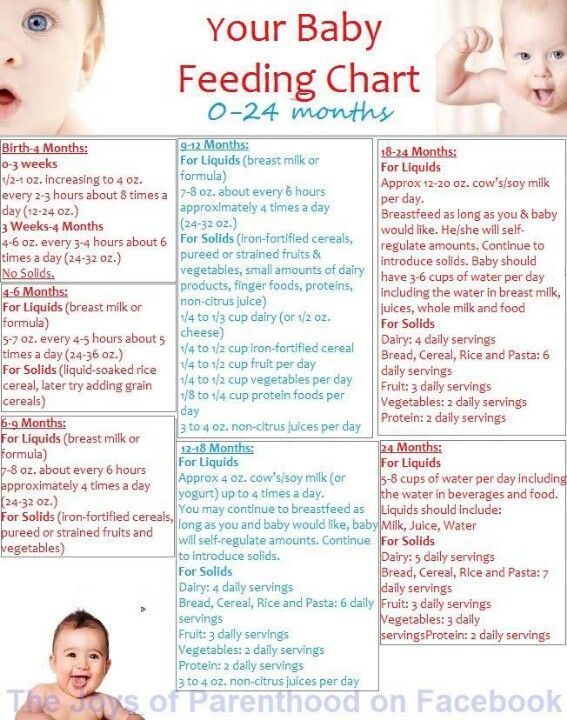
Iron-Rich Food Ideas for Toddlers
Congratulations, your baby is now a toddler! From age 1-3, iron remains an essential part of the diet, but the amount they need drops down to about 7 mg per day. Your growing toddler will be ready and able to handle the more advanced textures and tastes of what’s on your plate, but you should stay mindful of choking hazards. Here’s a list of iron foods for toddlers.
- Tuna salad on crackers or toast
- Hummus dip with pita bread, cucumber and bell pepper spears
- Chili with beans
- Quesadilla with refried beans with salsa dip
- Nut butter and jelly (or sliced berries, pears or banana) sandwich
- Sesame noodles
- Pumpkin pancakes or muffins with strawberries
- Oatmeal with raisins and hulled hemp seeds
- Picadillo
- Spaghetti with meatballs or meat sauce
- Pasta with pesto sauce
- Lentil soup
- Burritos made with lentil or ground beef filling
- Whole grain dry cereal with orange slices
- Peanut butter, banana and strawberry smoothie
- Smoothies with leafy greens, berries and hemp seeds
Related: Learn even more about what to feed two-year-olds.
Iron-Rich Foods for Older Kids
Got older kids? Here are more ideas for how to serve foods high in iron to kids.
- Nut butter on toast with sliced banana and chia seeds
- Iron fortified breakfast cereal with fruit
- Breakfast smoothie with nut butter, fruit and yogurt
- Yogurt parfait with berries, pepitas and granola
- Spaghetti and meat sauce
- Minestrone soup
- Lentil soup or chili
- Nut butter and banana roll-ups or sandwiches
- Shrimp and veggie stir-fried noodles
- Peanut mango chicken wraps
- Burrito bowls with meat and/or beans, salsa or diced tomato, olives and cheese
- Veggie sticks with hummus
- Pumpkin seeds
- Roasted chickpeas
- Trail mix with Cheerios, nuts and raisins
- Orange chocolate date balls
- Sesame snaps
How Much Iron Do Babies and Toddlers Need?
From 6 to 12 months old, babies need about 11 mg of iron per day in their diets. That’s a lot of iron! It’s more than young kids need. It’s almost as much as a teenager needs, and teenagers have a lot more room in their tummies to work with!
That’s a lot of iron! It’s more than young kids need. It’s almost as much as a teenager needs, and teenagers have a lot more room in their tummies to work with!
From age 1-3, iron remains an essential part of the diet, but the amount of iron a toddler needs drops down to about 7 mg per day. (2)
To give you an idea (3):
- ½ cup of canned black beans contains 2.3 mg iron
- 1 ounce canned salmon contains .33 mg iron
- ½ cup of cooked Swiss chard contains 2 mg iron
- 1 ounce of cooked ground beef contains .83 mg iron
- ¼ cup fortified infant oat cereal contains 6.8 mg iron
- ½ cup cooked, mashed sweet potato contains 1.2 mg iron
- ½ cup of Cheerios cereal contains 1.8 mg iron
Don’t worry, that doesn’t mean that your sweet, little 6-month-old needs to start eating steak every day. But it should help you see that you have to make the most of the small amounts of food your baby eats each day as they start solid foods.
Remember, it’s not important that babies get all of their iron in one sitting, or even that they get exactly 11 mg each and every day.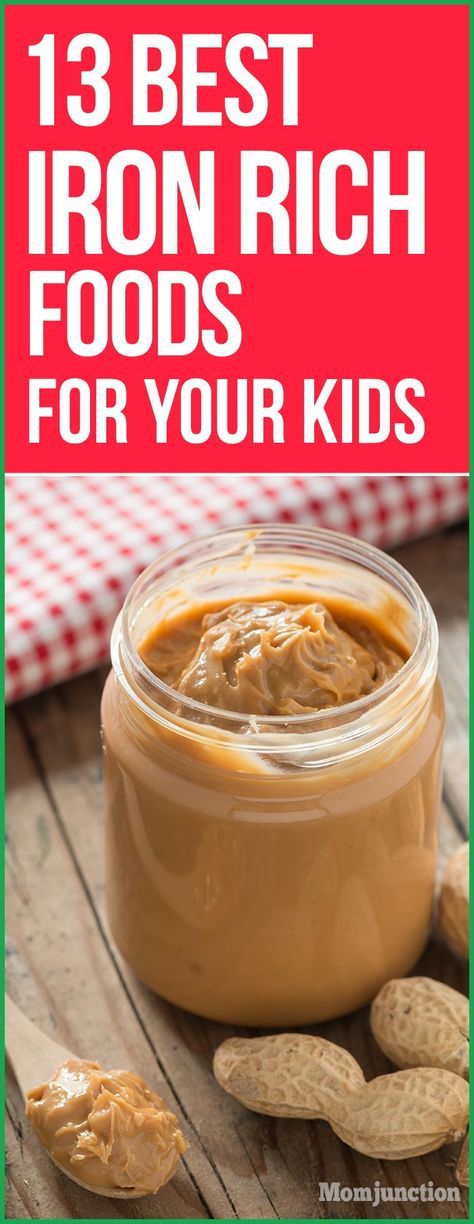 Start small, and offer iron-rich foods at each meal and snack time. By the time your baby gets accustomed to solid foods, they’ll be well on their way to meeting their iron needs.
Start small, and offer iron-rich foods at each meal and snack time. By the time your baby gets accustomed to solid foods, they’ll be well on their way to meeting their iron needs.
Related: Is your child a picky eater? Read our expert tips for managing picky eating.
If my older baby or toddler is still nursing or drinking formula for most of their diet, don’t they get everything they need from that?
That depends. All babies need iron. While breast milk continues to provide most of the nutrients your baby needs to grow and thrive, it is not a good source of iron. Also, iron from a nursing mom’s diet does not transfer into her milk. So, breastfed babies will need their first solid foods to be rich in iron to meet their needs.
Most commercial infant formulas are fortified with iron, so babies who use formula for the majority of their diet will depend less on solid foods to meet their iron needs.
Related: Need help feeding your 1-year-old? Read more about what 1-year-olds eat.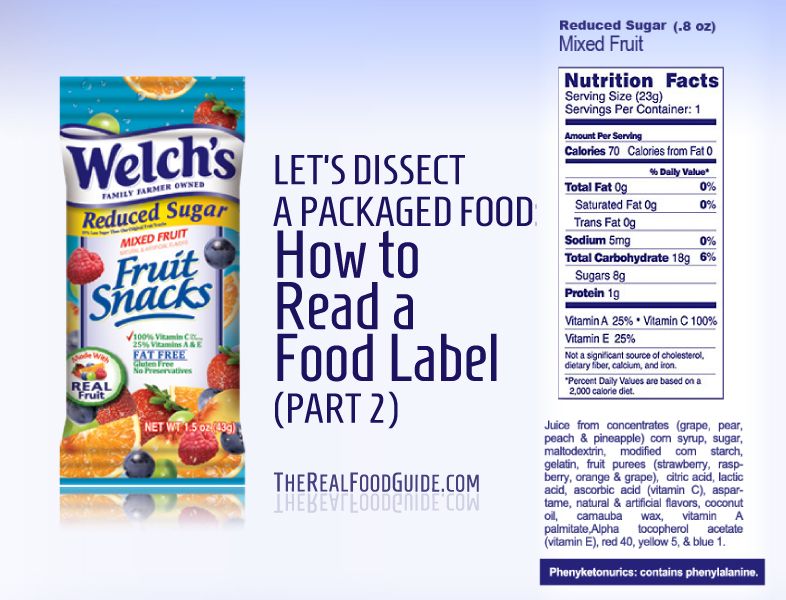
Do I need to give my baby vitamin drops?
There are many factors that can increase a baby’s risk of iron deficiency. For these babies, iron supplementation might be a good idea. Talk to your pediatrician if you’re concerned about your child’s iron needs. Iron deficiency is common in infants and children. A quick and easy blood test can screen for iron deficiency at your baby’s next well visit.
Do I need to worry about my child getting too much iron?
Generally speaking, you don’t need to worry about your baby or toddler getting too much iron from foods. Babies who are exclusively breast or formula fed using an iron-fortified infant formula, and begin eating solid foods like vegetables, fruits, meats and beans around 6 months of age do not need to worry about getting too much iron.
Babies who are mostly formula fed with an iron-fortified formula should not take an additional iron supplement (or multivitamin containing iron) unless directed by their doctor. If you use a multivitamin with iron, be sure to keep it out of reach from all children in the house, as these supplements are not treats but are often designed and flavored to be very appealing to kids. Getting too much iron from supplements can be harmful.
If you use a multivitamin with iron, be sure to keep it out of reach from all children in the house, as these supplements are not treats but are often designed and flavored to be very appealing to kids. Getting too much iron from supplements can be harmful.
Related: Learn what’s normal and what’s not when your toddler isn’t eating much.
Iron hacks for busy parents
Sometimes it can seem overwhelming to meet your baby’s iron needs in the small bites that actually make it into their stomachs! A couple of tips to make it a little easier (4,5,6):
- Some types of iron are easier for the body to absorb. Iron from animal products like meat, poultry and fish (called heme iron) is more readily absorbed than iron from plant sources, iron supplements and iron-fortified foods (called non-heme iron).
- You can increase absorption of non-heme iron foods by pairing them with foods that are high in vitamin C, like broccoli, tomatoes and strawberries. This is a great tip for babies, kids and adults alike!
- Iron-fortified cereals and other grains are an easy way to boost iron intake throughout the day.

- Think outside the bowl! Iron-fortified cereals can be used as ingredients in baked goods, casseroles, or other mixed dishes. Check the manufacturer’s websites for recipe ideas.
- Boost the iron content of soft foods like mashed avocado, sweet potatoes, or bananas by adding a spoon full of iron-fortified oatmeal. If you’re doing baby-led weaning, cut these items into spears and roll them in cereal. As a bonus, it can make slippery foods easier to hold!
- Make the most of WIC cereals! If you’re eligible for WIC, take advantage of the cereals in your food package: they are all iron-fortified.
- There is evidence that cooking certain foods in cast-iron cookware can increase its iron content and reduce iron deficiency, so if you are a fan of your cast-iron pan, keep using it!
Related: Create your toddler’s eating schedule in 5 steps.
If you need help getting your toddler to eat foods with iron, download our free picky eating guide.
More Articles From our Child Feeding & Nutrition Experts
- Is Vitamin D Good for Kids?
- Calcium-Rich Foods for Kids
- How Much Protein Do Kids Need?
- How to Pick the Best Probiotics for Kids
- Is Elderberry Safe for Kids?
References
- Baker RD, Greer FR.
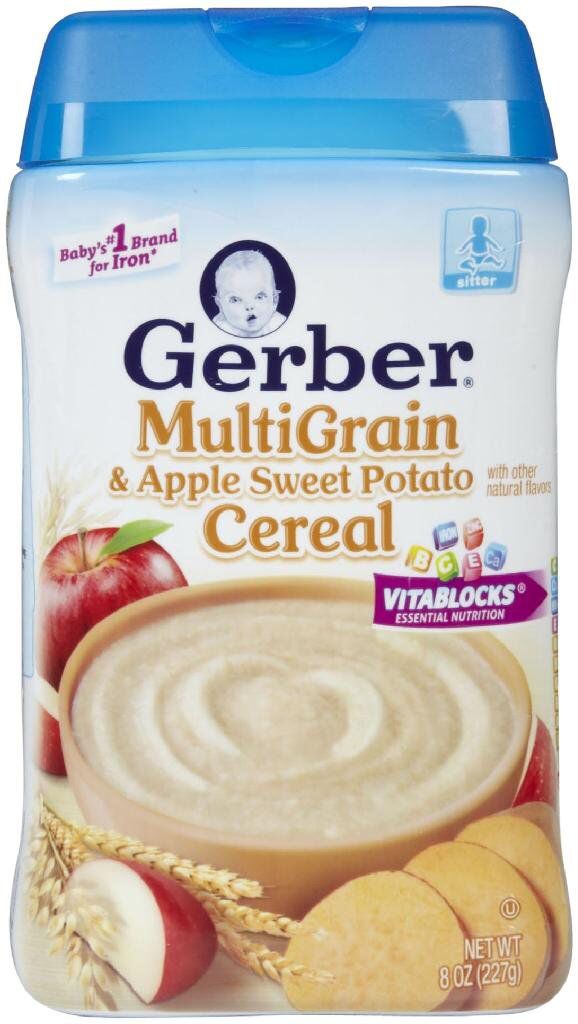 Diagnosis and prevention of iron deficiency and iron-deficiency anemia in infants and young children (0-3 years of age). Pediatrics. 2010;126(5):1040-1050.
Diagnosis and prevention of iron deficiency and iron-deficiency anemia in infants and young children (0-3 years of age). Pediatrics. 2010;126(5):1040-1050. - Otten, J. J., Hellwig, J. P., & Meyers, L. D. (2006). DRI, dietary reference intakes: The essential guide to nutrient requirements. Washington, D.C: National Academies Press.
- U.S. Department of Agriculture, Agricultural Research Service. FoodData Central, 2019. Fdc.nal.usda.gov.
- H C Brittin, C E Nossaman. Iron content of food cooked in iron utensils. J Am Diet Assoc. 1986 Jul;86(7):897-901PubMed
- Adish A.A., Esrey S.A., Gyorkos T.W., Jean-Baptiste J., Rojhani A. Effect of consumption of food cooked in iron pots on iron status and growth of young children: A randomised trial. Lancet (Lond. Engl.) 1999;353:712–716 PubMed
- Sharma S, Khandelwal R, Yadav K, Ramaswamy G, Vohra K. Effect of cooking food in iron-containing cookware on increase in blood hemoglobin level and iron content of the food: A systematic review.
 Nepal J Epidemiol. 2021;11(2):994-1005. PubMed
Nepal J Epidemiol. 2021;11(2):994-1005. PubMed
Best Iron-Rich Foods for Babies, Toddlers, & Kids (+50 Recipes!)
Ensuring that our kids eat a well balanced diet, including iron-rich foods, can be hard when they’re eating unpredictably. I hope this info on iron-rich foods for kids (and the recipe ideas at the bottom) helps to set your mind at ease!
Iron-Rich Foods
Ensuring that your kids are getting enough iron can seem hard when they’re in a phase of picky eating—or just not eating a ton. But since iron deficiency and iron deficiency anemia are still common issues with kids and it can impact their development and behavior, it’s important to try to include iron-rich foods in their daily meals.
For some context, according to the American Academy of Pediatrics, “Among children ages 1 to 3 years, iron deficiency occurs in 6.6 percent to 15.2 percent of toddlers, depending on ethnicity and socioeconomic status.” Which is much higher than I would have expected. They say that preterm infants, exclusively breastfed infants, and infants at risk of developmental disabilities are at higher risk for deficiencies.
They say that preterm infants, exclusively breastfed infants, and infants at risk of developmental disabilities are at higher risk for deficiencies.
I never want any parents to worry excessively about their child’s nutritional intake and thankfully, adding iron to a diet is actually quite easy.
(My favorite iron-rich recipes include Spinach Muffins, Extra-Veggie Baby Pasta, Oatmeal Bars, Meatballs, Chicken Puree, Butter Chicken, Chicken Tacos and Spinach Eggs. For more, scroll down.)
How much iron does my child need?
Toddlers ages 1 to 3 years need 7 mg/day of iron. Kids aged 4-8 need 10 mg/day. For context:
- ¾ cup of Cheerios: 6 mg
- 1 serving fortified infant oatmeal: 5 mg
- 4 ounce hamburger: 5 mg
- 2 ounces Banza chickpea pasta: 4 mg
- ½ cup dried peaches: 3.2 mg
- 2 ounces Barilla red lentil pasta: 3 mg
- ½ cup of lentils: 3 mg
- 1 cup prune juice: 3 mg
- Spinach Quesadilla: 2.1 mg
- ½ cup dried apricots: 1.
 7 mg
7 mg - ½ cup oatmeal: 1.7 mg
- Simple Green Smoothie: 1.7 mg
- Spinach Banana Muffin: 1.4 mg
- 1 egg: 1.4 mg iron
- ½ cup raisins: 1.5 mg
- 1 slice whole wheat bread: 0.7 mg
- ½ cup fortified baby puffs: 0.7 mg
- 1 ounce hummus: 0.7 mg
- 2 tbsp peanut butter: 0.6 mg
- ½ cup edamame beans: 0.5 mg
- 1 cup watermelon: 0.4 mg
TIP: It’s possible that your kiddo is already getting enough just by eating normal toddler-size servings.
Does my child need an iron supplement?
This question will vary a lot by child so it’s best to check in with your doctor. Kids are routinely screened for iron deficiency when they’re babies and toddlers, so definitely discuss this with your pediatrician if you don’t remember what those results were, if your child is older, or if you’re just curious about supplementing.
It can be hard to find a multivitamin with iron, so check your label, or consider a separate iron supplement in consultation with your doctor.
What are the best sources of iron for kids?
The AAP recommends that iron comes from iron-rich foods first and foremost. The type of iron in meat, fish, and poultry is easier for our bodies to absorb, but adding a range of iron-rich foods is your best bet. Here are some examples of foods with a good dose of iron.
- Red meats like beef and lamb
- Dark meat poultry
- Fish including shrimp and oysters
- Iron-rich vegetables including dark leafy greens (think Popeye!), baked potatoes, and pumpkin
- Beans and legumes like kidney beans, lentils, and tofu
- Fortified cereals like Cheerios and some hot cereals including baby oatmeal
- Whole grains and whole grain products (including some of the newer bean pastas like Banza)
TIP: A toddler-size serving of meat is 2 tablespoons to ¼ cup. A toddler-size serving of produce is 2 tbsp to ¼ cup. A serving of beans and legumes is 1-2 tablespoons for younger kids and ¼ cup for older kids. (Find more specifics in my Daily Toddler Nutrition Guide.)
(Find more specifics in my Daily Toddler Nutrition Guide.)
Top 10 Best Iron-Rich Foods for Babies
Here are my go-to foods with a lot of iron that you can feed to a baby who’s eating purees or baby led weaning style foods.
- Beef, ground
- Bean puree
- Beans, very soft and lightly mashed
- Bean pasta, cooked very soft (like Banza)
- Chicken, finely shredded or ground or Chicken Puree
- Eggs, scrambled or Egg Yolk Puree
- Green bean puree
- Infant cereal like baby oatmeal, fortified
- Oatmeal
- O cereal
- Smoothies with spinach or kale (serve on a spoon or in a reusable pouch)
- Sweet potatoes, mashed
- Pea puree
- Peanut butter puree
- Strawberry puree
TIP: Iron stores in babies start to run out starting around 6 months, so you’ll want to incorporate these foods into your baby’s diet from an early age.
Top 15 Best Iron-Rich Foods for Toddlers and Big Kids
These foods are easy to prepare and packed with iron for kids.
- Apricots, dried
- Beans
- Bean pasta (like Banza with marinara sauce)
- Beef burgers
- Broccoli
- Eggs
- Green beans
- Oatmeal
- Peanut butter
- Raisins
- Smoothies with spinach or kale
- Spinach Pesto
- Strawberries
- Watermelon
- Wheat bread
TIP: Aim to serve 2-3 of these foods (from either the baby or toddler list) most days and you should easily provide enough opportunities for your child to eat enough iron.
Add Vitamin C for Increased Iron Absorption
If you pair iron-rich foods with produce with plenty of Vitamin C—think citrus, strawberries, kiwi, tomatoes, dark greens, and bell peppers—the iron will be more readily absorbed by the body. Some ideas to consider:
- Pasta with Meatballs (Vitamin C from tomatoes, iron from beef)
- Bean Burritos with salsa (iron in beans, Vitamin C from salsa)
- Bean Quesadillas with chopped tomatoes on the side (iron in beans and whole grain tortilla, Vitamin C from tomatoes)
- Simple Green Smoothie (iron from greens, Vitamin C from fruit)
- Spinach Banana Muffins with Banana with kiwi (iron in spinach, Vitamin C from kiwi)
Limit Milk to No More than 24 Ounces Each Day to Avoid Limiting Iron Absorption
Experts at the Mayo Clinic also advise against letting the kids have more than 24 ounces of milk in a day (or three 8 ounce servings) which could negatively impact iron absorption. That much milk could also make them less hungry for other foods, which could also limit how much iron they’re able to eat through foods.
50 Best Iron-Rich Recipes for Babies, Toddlers, and Kids
Here are some of my favorite recipes for kids of all ages that are rich in iron. (The list is organized alphabetically for easy reference, not in order of preference!)
- Bean Puree
- Bean Pasta with Marinara Sauce
- Beef Burritos with Veggies
- Black Bean Quesadillas
- Black Bean Soup with Citrus
- Broccoli Pesto
- Broccoli Cheddar Soup
- BBQ Shredded Chicken
- Cheesy Meat Buns
- Chicken Meatballs with Sweet Potato
- Chocolate Smoothie with Hidden Veggies
- Green Smoothie
- Kale Bites
- Lentils and Rice with Dried Fruit
- Lentils with Tomatoes and Italian Spices
- Lentil Soup with Veggies
- Lentil Falafel
- Meatballs with Hidden Veggies
- Mini Egg Muffins
- Mexican Egg Muffins with Spinach
- Moroccan Lamb Meatballs
- No-Bake Energy Bites
- Nut-Free Hummus
- Oatmeal with Apple and Raisins
- Oatmeal Bars
- Oatmeal with Pumpkin
- Pesto Chicken and Brown Rice
- Potato Nachos
- Pumpkin Oatmeal Bars
- Pumpkin Oatmeal Muffins
- Slow Cooker Chicken and Bean Tacos
- Slow Cooker Black Bean Soup
- Slow Cooker Chicken Tacos
- Spinach Banana Muffins with Banana
- Spinach Pancakes
- Spinach Eggs
- Spinach Pesto
- Spinach Quesadillas
- Strawberry Puree
- Strawberry Smoothie
- Strawberry Muffins
- Sweet Potato Quesadillas
- Sweet Potato Baby Food
- Tofu Nuggets
- Tofu, Baked
- Tofu with Sesame
- Whole Wheat Bread
- Veggie Chili
- Veggie Chili Mac
- Zucchini Burgers
Printable Iron-Rich Foods List
For easy reference, you can print this list of iron-rich foods for kids keep in your kitchen, or save the image on your phone.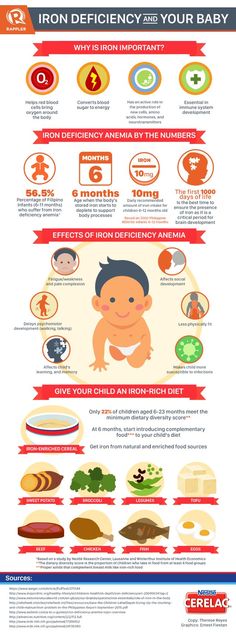 Simply sign up for my newsletter and gain access to my entire FREE Resource Library of printables.
Simply sign up for my newsletter and gain access to my entire FREE Resource Library of printables.
Related Recipes
I’d love to hear if iron has been an issue for you with your kids. Chime in below in the comments!
Iron in baby food, does the child need additional iron? Vitamin C contributes to the absorption of iron, which is why it is so necessary to include fruits and vegetables in the diet. It is important to know that children at risk of anemia fall into the following categories:
- Babies who were born prematurely; iron stores are deposited during the last few months of pregnancy.
- Infants who were of low birth weight, regardless of gestational age.
- Infants whose mothers were malnourished during pregnancy or who have diabetes.
Our body needs iron to help the protein compound hemoglobin carry oxygen throughout the body. Until 6 months of age, iron stores should not be replenished with both artificial and breastfeeding of healthy full-term infants. You should also keep in mind that the iron reserve in the baby's body will not suddenly start to decrease!
You should also keep in mind that the iron reserve in the baby's body will not suddenly start to decrease!
Formula-fed healthy and full-term infants are rarely prone to iron deficiency due to its high content in formula milk. Healthy and full-term babies who are exclusively breastfed are also not susceptible to iron deficiency if the baby does not start eating adult foods before 6 months of age.
Introducing adult food too early can actually change the infant's iron levels. When breastfeeding, the baby receives the necessary amount of iron through mother's milk.
Most breastfeeding babies do not need any additional nutrition, eg water, vitamins, iron, for at least the first six months of their lives.
Human milk provides the baby with all the necessary vitamins: liquid and nutrients to keep the baby healthy. Around the age of six months, you need to start introducing iron-fortified foods into your baby's diet. Your pediatrician may prescribe vitamin D or iron supplements if needed.
When introducing complementary foods, it is necessary to supplement mother's milk with iron-containing products at the age of the baby from 7 years older. In the diet of infants up to a year with artificial feeding, a milk mixture with iron should be present.
Now let's see how much iron is in 1 tablespoon of the following common baby foods:
Broccoli 1.1 mg
Potato 1.7 mg
Beef 2.9 mg
Chicken meat 1.5 mg
Egg yolk 7.2 mg
Contents:
If the baby does not have enough iron, he may experience the following symptoms:
- slow weight gain
- no appetite
- pale skin
- low activity level, but high irritability (moody and fussy)
What is the recommended daily dose of iron for a child?
WHO recommendations for preventing iron deficiency and maintaining adequate iron stores in individuals on a mixed diet.
Mother's milk contains vitamin C
As the baby grows, it is possible to increase iron absorption with natural foods when meat foods are eaten with foods containing vitamin C at the same time. Consuming cereals with fruits that contain vitamin C will help absorb the iron found in the grain product.
Consuming cereals with fruits that contain vitamin C will help absorb the iron found in the grain product.
Eating foods high in vitamin C in baby food will help the body absorb the iron found in most foods. Most of the iron received by the body is non-heme iron; This type of iron has less bioavailability and is absorbed in smaller amounts by the body. It turns out that vitamin C helps to make full use of iron.
Most pediatricians will recommend serving cereals along with fruit and vegetarian meals. As the child gets older, you can expand his menu and serve fruits, meat (for example, chicken), vegetables and yogurt - a balanced diet.
Foods fortified with vitamin C
- Citrus fruits
- Berries
- Green vegetables (such as broccoli and cabbage)
- Peaches 9000 Apples
- Bananas
- 0008
- Tomatoes
Iron deficiency is rare in breastfeeding within 6 months of life. Iron is present in breast milk. Although human milk does not contain large amounts of iron, it is very well absorbed. Approximately 50 percent of the iron in mother's milk is absorbed by the baby's body, compared with 7-12 percent in formula. Because a full-term baby's iron stores begin to decline around six months of age, adult foods can help meet a baby's growing iron and protein needs at the same time.
Although human milk does not contain large amounts of iron, it is very well absorbed. Approximately 50 percent of the iron in mother's milk is absorbed by the baby's body, compared with 7-12 percent in formula. Because a full-term baby's iron stores begin to decline around six months of age, adult foods can help meet a baby's growing iron and protein needs at the same time.
Cow's milk has a rather low amount of iron and infants are less able to absorb it. Feeding cow's milk to infants can lead to gastrointestinal upset. That is why they prefer not to give this milk to children until they have reached 1 year. Vitamin C aids in the absorption of iron, so fruits and vegetables should be included in the diet whenever possible. Proteins, fats and carbohydrates are the main nutrients that are the building blocks and source of energy for all living things. But no less significant biological role belongs to minerals. Despite their insignificant presence in the human body, they take part in numerous reactions and metabolic processes, therefore they are absolutely necessary for normal life in any of the periods of life. Minerals are part of enzymes, hormones and other biologically active molecules that, like conductors, direct and regulate metabolic processes. 81 chemical elements have been found in the human body, and the stability of their regular intake is a prerequisite for health. Minerals are not synthesized on their own, they come from outside and are absorbed with food and water. Content: Hide
Sources of heme and non-heme iron in various foods are listed below:0062

Iron foods for children
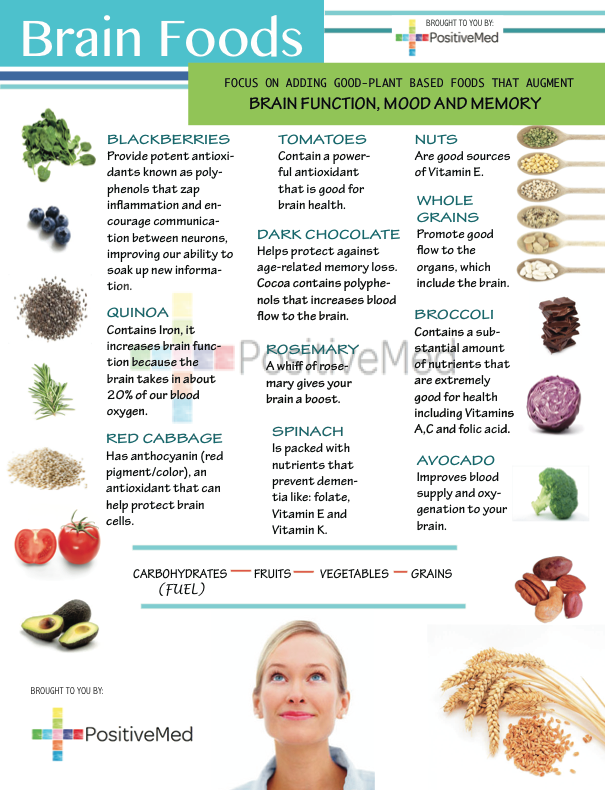 Their sufficient amount is especially important during periods of active growth and development, which determines the importance of a rational and balanced diet for pregnant women and children, because a deficiency of even one of the elements can adversely affect health.
Their sufficient amount is especially important during periods of active growth and development, which determines the importance of a rational and balanced diet for pregnant women and children, because a deficiency of even one of the elements can adversely affect health.
 This is a trace element, on average, in an adult, its content is about 4 grams. And in terms of a kilogram of weight, the largest amount of iron in the tissues is observed in the neonatal period, when the baby is born with the stock of the element acquired from the mother during intrauterine development. The main part of iron is found in the blood in the structure of hemoglobin. This protein binds with oxygen to transport it to every cell of the body, providing tissue respiration, and hence the operation of all organs and systems. Then, having given up oxygen, hemoglobin combines with carbon dioxide and transports it for subsequent release by the lungs from the human body. It is hemoglobin that colors blood red. In addition to blood cells, iron is found in the bone marrow, liver, muscles, and spleen. This mineral is part of enzymes that accelerate DNA synthesis during cell division.
This is a trace element, on average, in an adult, its content is about 4 grams. And in terms of a kilogram of weight, the largest amount of iron in the tissues is observed in the neonatal period, when the baby is born with the stock of the element acquired from the mother during intrauterine development. The main part of iron is found in the blood in the structure of hemoglobin. This protein binds with oxygen to transport it to every cell of the body, providing tissue respiration, and hence the operation of all organs and systems. Then, having given up oxygen, hemoglobin combines with carbon dioxide and transports it for subsequent release by the lungs from the human body. It is hemoglobin that colors blood red. In addition to blood cells, iron is found in the bone marrow, liver, muscles, and spleen. This mineral is part of enzymes that accelerate DNA synthesis during cell division.
IMPORTANT! The effective operation of these structures is especially necessary during periods of growth and maturation of organs. Iron is also a structural component of about 50% of the enzymes involved in energy metabolism, as well as in the reactions of neutralizing foreign substances in the liver. Without it, the normal functioning of brain cells is impossible.
Iron deficiency
Unfortunately, insufficient intake of minerals is a common phenomenon in the modern world among both adults and children. Iron deficiency disrupts the work of all body cells, especially if their functioning requires intensive metabolism and oxygen supply. The changes concern the main organs and systems, manifested by a decrease in the activity of all processes and the ability to withstand the negative impact of external factors. A late and already pronounced manifestation of iron deficiency is the development of anemia, in the common people - anemia. In this condition, the amount of hemoglobin decreases, and the formation of altered erythrocytes (red blood cells) also occurs - they become pale and reduced in size. In humans, the total iron content in the blood serum decreases.
Manifestations of iron deficiency anemia
Symptoms of this disease are varied and not always specific. In infancy, manifestations may be blurred, and the main signs of iron deficiency will be insufficient growth or a delay in the formation of motor skills, deviations in neuropsychic development. In older children, iron deficiency can be manifested by problems in assimilation of information and learning, low concentration of attention and behavioral anomalies.
IMPORTANT! With a significant lack of iron, changes in the skin and mucous membranes are often observed: pallor and dryness, the appearance of cracks on the arms, legs and around the mouth, layering and increased fragility of nails, dull hair. Babies often develop painful sores in the oral cavity and changes in the tongue - manifestations of stomatitis.
Other typical symptoms of this micronutrient deficiency are muscle weakness, irritability and sleep disturbances. The child quickly gets tired, does not cope well with the usual load for his age.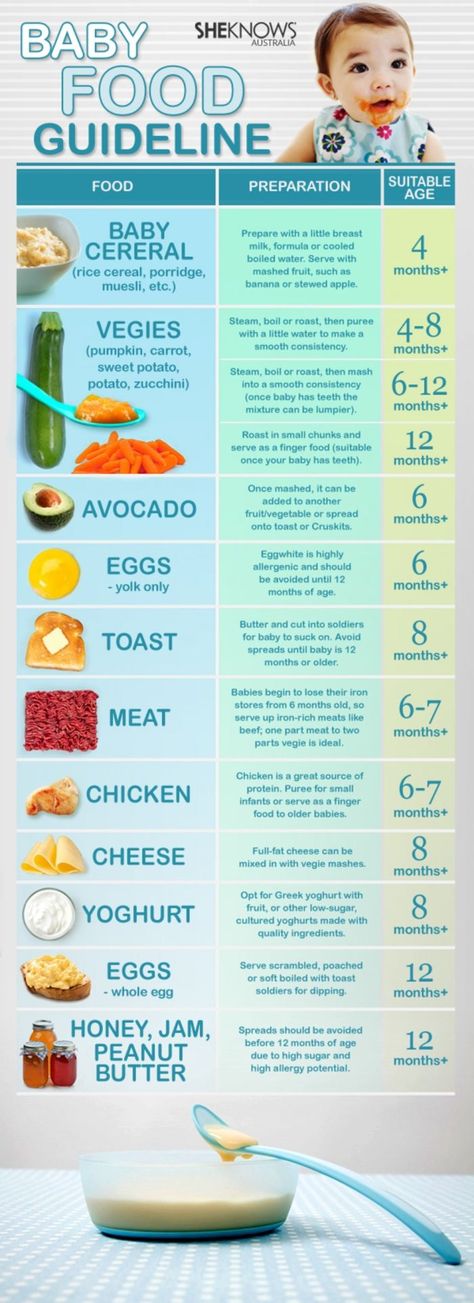 People with iron deficiency anemia often have altered taste and appetite, and may also develop a desire to eat inedible items such as chalk and lime.
People with iron deficiency anemia often have altered taste and appetite, and may also develop a desire to eat inedible items such as chalk and lime.
Causes of deficiency
In young children and pregnant women, the main factor in iron deficiency in the body is its low intake from food. Indeed, due to intensive growth and development, first intrauterine, and then independent, the need for this trace element is very high. That is, in these groups, iron deficiency is always associated with its negative balance - insufficient intake compared to the need for daily expenditure. This leads first to depletion from the depot, and then to the depletion of the mineral reserves in the body. Why is this happening? In the modern life of an urban person, refined foods are often used in nutrition, and food is depleted in vitamins and minerals.
IMPORTANT! Iron deficiency during pregnancy and then during breastfeeding is transmitted to the infant from the mother and can have an adverse and even sometimes irreversible effect on his health. Therefore, it is extremely important that the nutrition of a pregnant and lactating woman is complete, containing all the necessary nutrients in sufficient quantities and enriched with useful substances.
It is impossible to neglect the recommendations for taking vitamin-mineral complexes during pregnancy and lactation, since very often it is not possible to make a woman's diet sufficient and balanced. On the contrary, babies in their first year of life get everything they need from food, without the use of special preparations for the prevention of deficient conditions. In the first half of the year, the main role in the nutrition of the child belongs to breast milk, the main source of essential substances, vitamins and minerals, including iron. However, by the sixth month of life, exclusively natural feeding can only satisfy the child's needs for iron by 6-7%. At the same time, the nutrition of the mother at this age does not significantly affect the supply of this trace element to the baby. The main task is not to delay and start the introduction of complementary foods on time to meet the high demand for this element in the second half of life.
Deficiency prevention
What foods are rich in this micronutrient, and what complementary foods for children can be sources of iron? The leader in the amount of iron in the composition is food of animal origin, its highest content is in meat, fish and eggs. Different types of meat products differ in the presence of minerals and vitamins.
IMPORTANT! Thus, the highest content of iron is found in red meat - veal and beef, and there is also a lot of it in the liver of animals. In addition, they contain iron in an easily digestible heme form, which increases the absorption of this element in the intestine.
Modern industrial technologies for the production of baby food allow the production of products with a very high degree of grinding - a homogeneous consistency. Therefore, meat complementary foods can be safely included in the diet of babies from 6 months old, and this is one of the fundamental innovations in the nutrition of children in the first year of life. Previously, meat complementary foods were introduced only to children older than 7 months.
Previously, meat complementary foods were introduced only to children older than 7 months.
Other sources
Are there iron-rich foods among plant foods? Yes, this trace element is present in legumes, nuts and seeds, grains, and some types of greens (parsley, thyme, lettuce). But compared to meat products, the content of iron in them, as well as the degree of its absorption in the intestines, is lower. Among the foods of plant origin, buckwheat should be singled out, which is used in whole grain form and is several times superior to other crops in terms of iron content.
IMPORTANT! Therefore, at the age of 4–5 months, when deciding on the start of the introduction and choice of complementary foods, preference should be given to porridge, especially in babies at risk of developing iron deficiency anemia and poorly gaining weight. In addition, in cases of late start of the introduction of complementary foods, this is also a good choice as a start.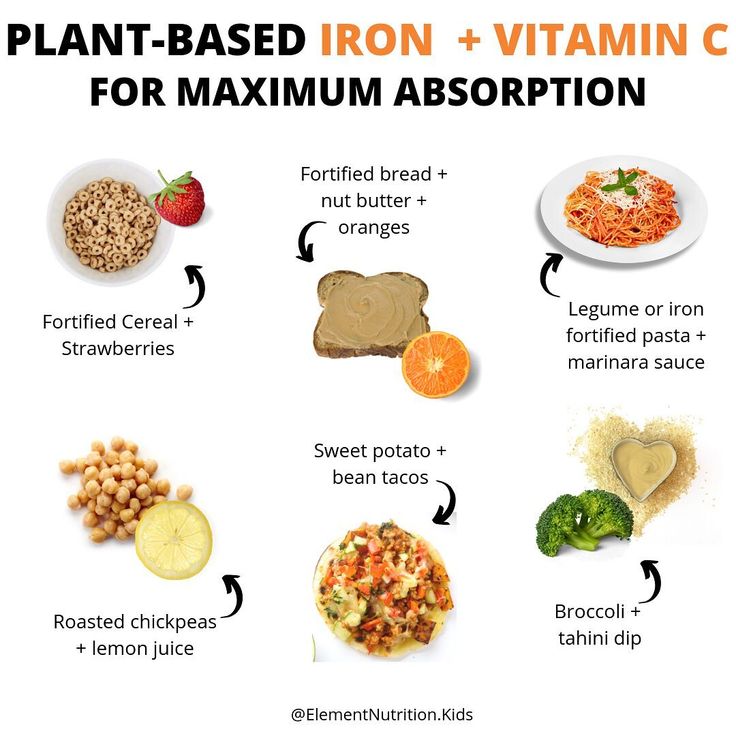
And buckwheat at this age should be singled out as a priority among cereals due to the high content of vegetable protein and rich mineral and vitamin composition. Another important feature that must be taken into account when compiling a menu for babies is the fact that when meat puree is combined with grains, the degree of absorption of non-heme iron from a vegetable source increases and its biological value increases. Therefore, in children older than 6 months, cereal complementary foods are included in the diet not only in the form of milk porridge, but also as a component of meat and vegetable dishes, in which meat is balanced with dairy-free porridge.
Fortified foods
Despite the high nutritional value and diverse vitamin and mineral composition of natural foods recommended in baby food, the content of micronutrients in the finished meal does not always satisfy the high need for these substances at an early age.
IMPORTANT! The way out of this situation is the use in the nutrition of babies of products that are additionally enriched with biologically active substances that are vital during periods of active growth and development.






